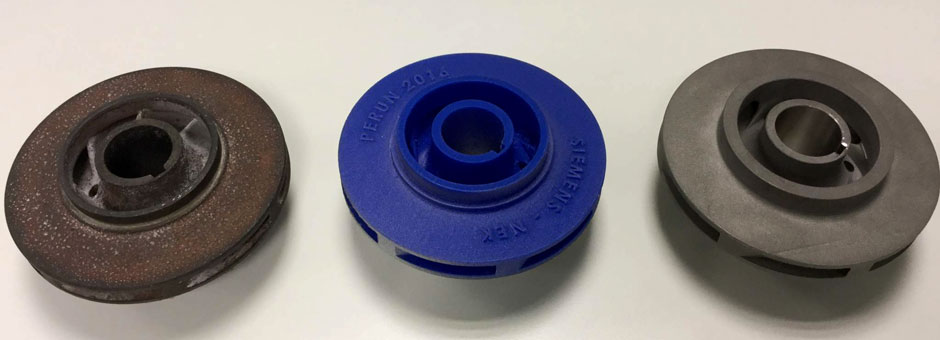Change Is Additive—Week of 3/10/2017
CHANGE IS ADDITIVE—A 3D Printing News Series by Fathom
Biomimetic 3D Printing Imitates Shells, 3D Printed Parts Used at Nuclear Plant, New Materials from Stratasys, Additive Excavator Proves Durability, Fords New 3D Printing Methodology
With so many weekly developments in a fast-changing industry like additive manufacturing, the headlines can really stack up. To cut through the clutter of 3D printing news, check out these staff picks of the week. What do you think is the most impactful development?
Fords New 3D Printer Opens Design Possibilities
The Ford Motor Company has a new tool in its arsenal, the Stratasys Infinite Build 3D Printer. Unlike most commercial printers, the Stratasys doesnt use filament or resin. Instead, it uses a proprietary micro-pellet powder thats almost like sand. The thermoplastic, pelletized material is fed along a screw drive and heated until liquefaction before its shot out of a print head. A robotic arm refills material canisters when needed, which means the machine can operate on big jobs for many hours or even days / / Read More / / Watch Video
3D Printed Excavator Proves Durability
Project AME, a cross-discipline and cross-departmental collaboration led by Oak Ridge National Laboratory, recently unveiled its culmination, a fully 3D printed excavator.
The project, undertaken in order to demonstrate possibilities in large-scale additive materials technologies, corroborated the feasibility of 3D printing with metal alloys and the strength of high-performance 3D printed plastics / / Watch Video // Read More
Siemens 3D Prints Part for Nuclear Power Plant
Siemens recently announced that it has used 3D printing to create a crucial replacement part for a nuclear power plant in Slovenia. This part is particularly notable because its implementation required undergoing stringent certification and qualification processes / / Read More

Researching Shell Structure for Biomimetic Additive Manufacturing
The Danish Council for Independent Research Technology and Production Sciences has funded research into the structural engineering of materials in oyster and abalone shells. Using 3D printing to test parametric models, researchers have been able to closely imitate the naturally occurring structures in order to better understand their unique strength // Read More

MIT Researchers Turn Common Organic Polymer into 3D Printing Material
Researchers at MIT have developed a technique for 3D printing with cellulose acetate, a cellulose material with a reduced number of hydrogen bonds. Unlike other forms of cellulose, cellulose acetate can be dissolved in acetone and extruded through the nozzle of a 3D printer.
“After we 3D print, we restore the hydrogen bonding network through a sodium hydroxide treatment,” explains MIT researcher Sebastian Pattinson, lead author of the research paper documenting the cellulose 3D printing study. “We find that the strength and toughness of the parts we get…are greater than many commonly used materials.” These materials include ABS and PLA / / Read More


3D Print This Headphone Stand
This fully 3D printable design is available from Thingiverse / / Download

To start a conversation about a project or discuss a quote for 3D printing, CNC machining, urethane casting, rapid tooling, injection molding or R&D contract services, send us a request for quote. Fathom is also an authorized partner of Stratasys. Get a quote for a professional 3D printer today!
Imagery and News Sources: 3Ders.org, 3Dprint.com, 3D Printingindustry.com, Ford, Stratasys, Project AME, ORNL, Siemens, Danish Council for IRTPS, MIT, Thingiverse







